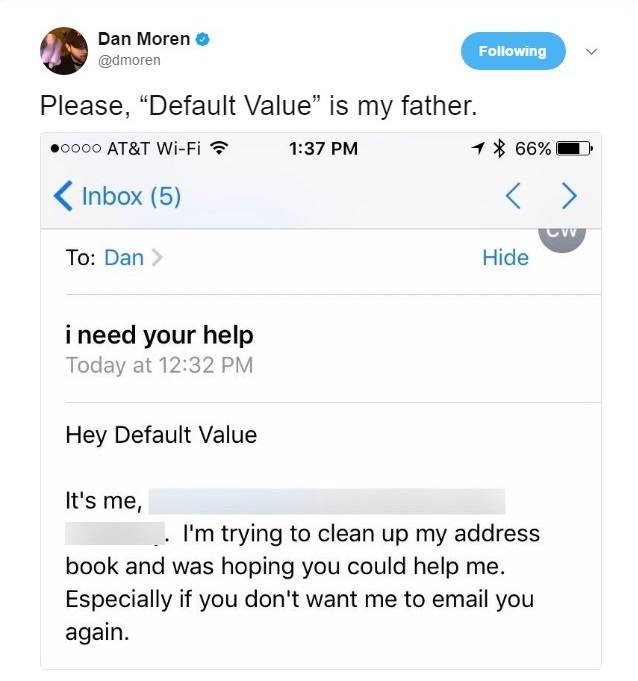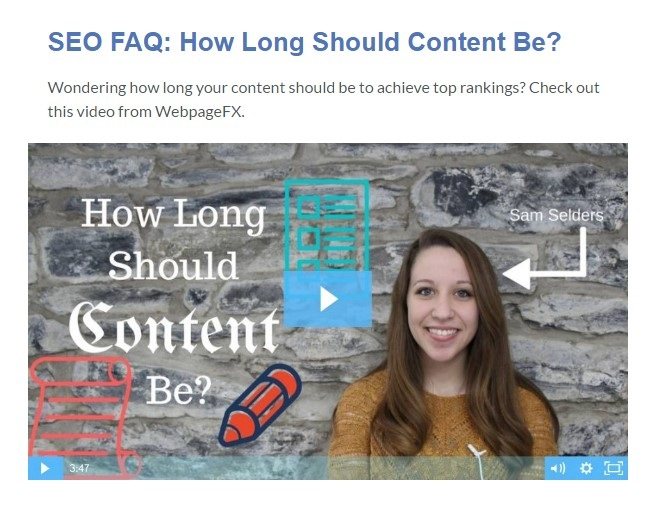What is email marketing ROI?
Email marketing return on investment (ROI) is an indicator for gauging an email marketing campaign’s efficiency and profitability. It determines the income from the campaign concerning the expense of running it. So, it aids companies in deciding whether their email marketing initiatives are worthwhile and producing fruitful outcomes.
It all boils down to making that email count! Email marketing ROI functions as a personal trainer for your company, whipping campaigns into shape and displaying the improvements (or losses) you’re making.
So, before you send that newsletter, double-check the math. It’s counterproductive to spend time and resources sending emails that will end up in the trash folder.
What do you do when your email marketing ROI is not “impressive?” We share nine tips for improving your email ROI. But first, let’s get you up to speed on the fundamentals.
Don’t miss our Marketing Manager Insider emails!
Join 200,000 smart marketers and get the month’s hottest marketing news and insights delivered straight to your inbox!
Enter your email below:
Inline Subscription Form – CTA 72
“*” indicates required fields
(Don’t worry, we’ll never share your information!)

What is email marketing ROI?
Email marketing ROI is a measure of your email marketing initiatives’ financial success. It computes the revenue from your email campaigns concerning the expense of conducting them. Simply put, it displays how much money you are generating or losing through email marketing.
Since it provides valuable information about the effectiveness and efficiency of your email campaigns, measuring email marketing ROI is essential. Knowing your ROI can assist you in determining if your efforts are profitable or whether you need to alter your campaigns for more efficiency.
How to calculate email marketing ROI
To evaluate email marketing ROI, you must account for your email campaigns’ expenditures and the income generated. Here are three stages to calculating email marketing ROI:
1. Calculate the costs of email campaigns
Calculate your overall investment first, considering expenses like email marketing software, design, content generation, and other fees. For instance, your business’s total investment would be $800 if you spent:
- $500 for email marketing software
- $200 for design and content development
- $100 for other costs
Calculations
Marketing campaign expenditure = $500 + $200 + $100 = $800
2. Calculate the total revenue generated from email campaigns
After that, calculate the income from your email campaigns by accounting for metrics like:
Suppose you send out 10,000 emails and achieve the following:
- 5% CTR
- 10% conversion rate
- $50 average order value
These metrics indicate that your email campaigns generated $2500 in revenue.
Calculations:
Total revenue = ($50 x 10,000) x (0.05 x 0.1) = $2500
or,
Total Revenue = $50 x 50 conversions = $2500
3. Calculate the email marketing ROI
Now that you’ve determined your overall expenses and earnings from your campaigns, you can calculate your email marketing ROI. Subtract the entire cost of executing those campaigns from the income to get the net profit and divide it by the total cost.
Formula
Email Marketing ROI = (Total Cost of Running Email Campaigns – Generated Revenue) ÷ Total Cost of Running Email Campaigns x 100
For instance, if the entire expense of running the email campaigns was $800 and the total revenue was $2500, the net profit would be $1700 ($2500 – $800).
Therefore, the ROI would be: $1700 / $800 * 100 = 212.5%

Double Your Leads
without having to double your traffic. Learn how to increase your website conversion rate today!
Get My Free Guide
What is a good email marketing ROI?
The typical good email marketing ROI can reach up to 4400%. This stat means companies can expect to benefit up to $44 for every $1 invested in email marketing. However, these numbers can vary based on factors such as:
A well-targeted and active email list, engaging and customized content, and a strategic approach incorporating regular analysis and optimization are necessary to achieve a high email marketing ROI.
5 metrics to monitor for email marketing ROI
Let’s look at five key metrics that can help you understand how your email marketing campaigns are performing and eventually achieve ROI:
- Open rate
- Click-through rate (CTR)
- Conversion rate
- Unsubscribe rate
- Bounce rate
1. Open rate
The open rate indicates how many recipients read your email. It’s a crucial indicator to track since it shows how well your email subject lines and content grab your audience’s attention.
A high open rate indicates that your emails are engaging and pertinent to your readers, whereas a low open rate might mean that your emails are being ignored or put in spam folders.
By monitoring the open rate, you can learn more about your email marketing efficacy and make the necessary corrections to increase audience engagement. Consider segmenting your email list, personalizing your subject lines, and experimenting with different send times to boost your open rate.
2. CTR
The CTR measures the percentage of recipients who click on a link in your email. It shows how engaged your audience is with the content, and you can use it to identify areas where design, call-to-action (CTA) positioning, or copywriting need to be changed.
A high CTR indicates that your email impacts and inspires action among your recipients. On the other hand, a low CTR could suggest that the receivers of your email are not sufficiently interested in it.
Remember that the secret to maximizing engagement and getting the desired results from your email campaigns is to monitor and improve them continuously.
3. Conversion rate
You can determine your email marketing campaign’s performance by the conversion rate. It describes the proportion of receivers who do more than just open and interact with your emails — they perform the required action — making a purchase or subscribing to a newsletter.
A high conversion rate indicates that your emails successfully convince readers to take the desired action. In contrast, a low conversion rate may show that your emails’ content or design needs improvement.
You can concentrate on the following to increase your conversion rate:
By implementing these techniques, you can raise the possibility that recipients of your emails will interact with them and eventually take the desired action.
4. Unsubscribe rate
The unsubscribe rate is another crucial statistic to monitor when measuring your email marketing success. It calculates the proportion of subscribers who decide not to receive further emails from your company.
A high unsubscribe rate can indicate that your audience is not responding to your content or that they consider your emails spam. On the other hand, a low unsubscribe rate suggests that your email campaigns are successfully interacting with and adding value to your subscribers.
Consider customizing your emails, segmenting your subscriber list, and routinely monitoring and analyzing your email data to spot any patterns or trends that could be causing high unsubscribe rates to lower your unsubscribe rate.
5. Bounce rate
The bounce rate is the percentage of emails unsuccessfully delivered to recipients’ inboxes. There are two types of bounces — hard bounces and gentle bounces. Hard bounces happen when an email is persistently denied because the email address is incorrect or nonexistent.
On the other hand, soft bounces are brief delivery failures that are frequently due to a server issue or a crowded inbox. A healthy email list and the delivery of your communications to the intended recipients depend on bounce rate monitoring and management.
A high bounce rate may indicate problems with the quality of your email list or the efficiency of your email distribution plan. A low bounce rate shows that your emails effectively reach their intended recipients.
Taking proactive measures to lower your bounce rate, such as regularly cleaning your email list and ensuring you have accurate and current subscriber information, can help you increase email deliverability and boost the effectiveness of your campaign.
Let Prospective Clients Come to You
Download our guide to see how you can use inbound marketing tactics to get in front of qualified business looking for your products or services.
Get My Free Guide

9 tips for improving your email marketing ROI
If you’re ready to get more out of your email marketing campaigns, these nine tips can help you improve the ROI of your overall strategy.
1. Segment your list
Dividing your email list into segments allows you to send more targeted emails, and it can drastically improve your campaign results. In fact, marketers have noted a 760% increase in revenue from segmenting email campaigns.
You can divide your list according to a number of characteristics including demographics, purchase history, behavioral data, perceived benefits, and stages of the sales funnel. Ultimately, the decision of how to segment your email list is up to you and what works best for your business.
Not all of your customers want the same thing, and segmentation can increase the relevance of your marketing efforts for each subscriber.
2. Personalize emails
Speaking of relevance, you can also personalize your emails to make them more applicable to individual subscribers.
You can start with something as simple as adding recipients’ first names in your email greeting instead of a generic “Hey there!” Just be sure to test your emails to avoid addressing subscribers by the wrong name.
If you want to take your personalization game to the next level, you can set up automated behavioral trigger emails. For example, if someone makes a purchase on your site, you can send a follow-up email with related items that complement their purchase.
Personalization increases email click-through rates by an average of 14% and conversions by 10%. So if you want to boost the ROI of your emails, personalization is a great option!
3. Focus on deliverability
It’s also important to pay attention to your email deliverability. Do your emails consistently reach recipients’ inboxes, or are they trapped by junk and spam filters? In order to get your emails past spam filters, you need to create clean, quality content and avoid using spam trigger words.
You should also always include an unsubscribe button at the bottom of your emails. If people can’t easily unsubscribe, they will be more likely to report your emails as spam. For more information about how to avoid email spam, check out the CAN-SPAM Act.
4. Send on the best days
The days you send your emails can have a big impact on engagement rates. Ultimately, you want to send your emails when recipients are most likely to open and read them. To determine the best days and times to send your emails, you can track your email performance and measure the results.
While Monday mornings may be a good time to send for some businesses, Thursday afternoons may work best for another. It’s also important to think about the time zones of your recipients. For example, if you send an email at 4 p.m. EST, it will reach a subscriber in London at 10 p.m. their time.
5. Optimize for mobile
Today, more than half of emails are opened on mobile devices – and that percentage will only continue to grow. This means that you need to make sure your emails look great on mobile devices and tablets, as well as computer screens.
If your emails don’t render well on mobile devices, recipients will likely delete them or unsubscribe from your emails. With MyEmailFX, you can choose templates that display on both desktop and mobile and ensure that your emails look great no matter the device recipients use to view them.
6. Create engaging subject lines
Engaging subject lines are essential for getting people to open your emails, learn more about your company, and ultimately become customers. The best subject lines are concise and personal, use strong verbs, and give readers an accurate idea of what they can expect to find inside the email.
You can also use subject lines to convey a sense of urgency— “Don’t miss our exclusive webinar!” or “Register now to save your spot!” For more helpful tips on creating interesting, effective subject lines, check out our post on subject line best practices.
7. Include calls to action
If you want your email subscribers to take a certain action, you need to tell them! Including calls to action (CTA) in your emails is a great way to boost traffic to designated landing pages. Whether you want to increase the sale of a certain product or encourage readers to sign up for your next webinar, CTAs are a great way to boost email marketing engagement and get your subscribers to take action on your site.
8. Add videos
Adding videos to your emails is also a great way to boost engagement.
A study by Wistia revealed that including video thumbnails in email increases clicks by an average of 22%! At WebFX, we include video content in our Marketing Manager Insider emails. This gives readers a visual that they can associate with the content, and it encourages them to click the links and visit our site to learn more.

9. Track and test email performance
Finally, you need to evaluate and optimize your email performance on a regular basis. Email platforms like MyEmailFX make it easy for you to test elements of your email like subject line, sender, and even email content.
You can also perform A/B tests to determine the types of content that resonate most with recipients. Paying attention to the results of your emails allows you to incorporate your findings and optimize your campaigns for the best results.
Increase your email marketing ROI today!
Need help creating and sending custom email campaigns? WebFX can help! Check out our email marketing plans, and contact us today to learn more. We can’t wait to hear from you!